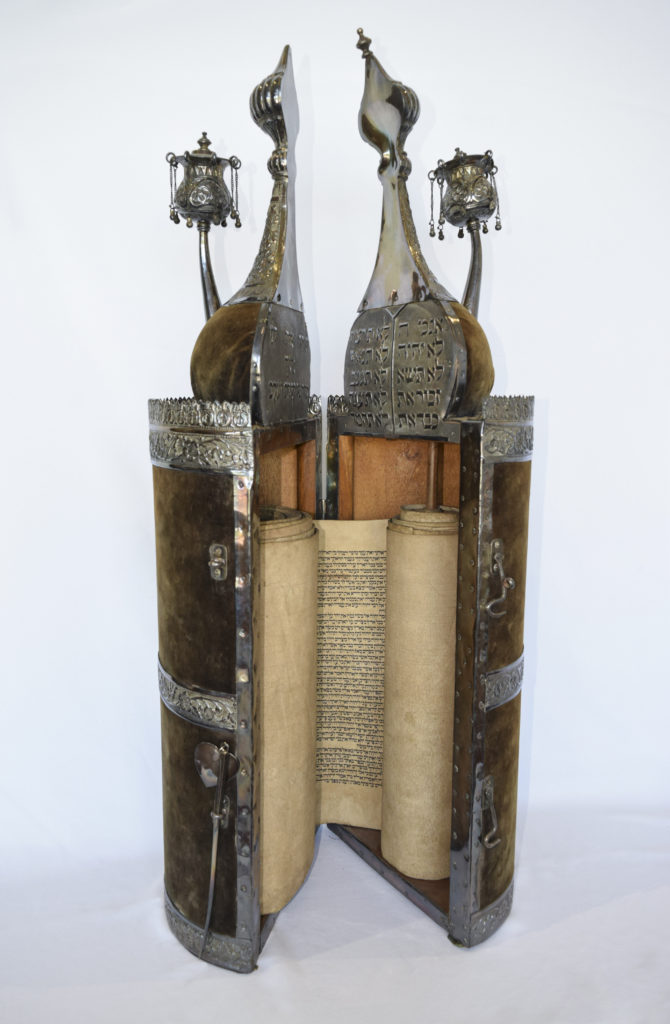Tik (Case) and Torah
India, Bombay (Mumbai), late 19th—early 20th century
Velvet, wood, silver, and ink-inscribed deerskin, h. 36 x w. 11 1/2 x d. 11 1/4 in. (closed)
B’nai B’rith Klutznick National Jewish Museum Collection, 2015.17.145
The tik or Torah case originates in design from Sephardic (Spanish and Middle Eastern) communities in areas such as Afghanistan, Cochin, Iran, Iraq, Libya, and Tunisia. The tik acts as a protective carrier for the Torah, or Five Books of Moses composed of Genesis, Exodus, Levitivus, Numbers, and Deuteronomy. The Torah contains ritual and moral laws that guide the lives of Jews everywhere. The tik is primarily constructed of wood and sometimes ornamental metal. Either shaped as a prism or cylindrical, with hinges allowing for movement, the tik opens lengthwise, allowing a view of the Torah scroll inside. The first tik was found in the 10th century in ancient Iraq. Its historical function was to protect the Torah scroll much like the enclosure that protected the Holy Ark in ancient times, and to permit portability for nomadic peoples. The tik is not modest in appearance. In fact, most tikim have elaborate adornments such as colorful drawings, inside shells wrapped in leather or luxurious fabric, or hand-hammered metal embellished with silver. Most also have inscriptions—biblical verses from Psalms or Proverbs or personal information about the donor—on the outside or inside. This tik opens to reveal the first words of the Ten Commandments embossed in silver on one side, and a verse from the last chapters of the Bible—“Moses taught the Torah, it is an inheritance to the nation of Jacob” (Deuteronomy 33:4) on the other. This particular tik is Indian-Iraqi in style. The Jews of Baghdad immigrated to India in the late eighteenth century and brought with them their tikim. The finials attached to this tik are purely decorative and do not actually cover the staves of the Torah.

